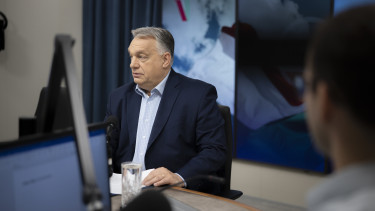One of the most prestigious U.S. universities is here in Hungary!

First things first – please tell our readers how an MIT program, MIT Catalyst to be precise, came to Europe and what its objectives are.
Martha Gray: MIT Catalyst aims to create a paradigm shift in how we approach and how we train future researchers so that we increase the likelihood that the ultimate outcome of the research has value and use outside the academy and has a palpable effect on our world. The Catalyst program started seven years ago as a collaboration between MIT and the Government of Madrid, and continues today as a broader collaboration between governments, corporations and academia.
This program centers on enabling researchers, who are typically young scientists who seek to have impact in the world, to think differently about formulating research proposals that consider addressing real societal needs currently unmet.
We have the opportunity to form what would be a historical collaboration with the University of Debrecen, under the auspices of the Ministry of Innovation and Technology, with the aim of starting the Catalyst program in 2020 – this is why we are in Debrecen, Hungary now.
Obviously, not every research project is successful, but we would want to make sure that those that are successful can lead to real benefits in a business and social sense, too. To achieve this goal Catalyst joins in at the very start of the research process. We help shape decisions about research opportunities, and we ask the right questions to enable researchers to set off in the right direction.

Does this mean you ask critical questions even before the start of a project and these questions may decide its fate?
Martha Gray: Correct. We found that by critically evaluating potential opportunities, even before the researcher has entered the lab, we can prevent embarking on projects that have no potential to add value in a real-world context. In my experience, those who pursue research careers, especially in health care, are motivated by the potential for their science to ultimately help patients and improve the overall health of society – yet, too often, their work reaches publication, but no further. To address this challenge, we aim to incorporate new way of thinking into researchers’ training, through which they learn to evaluate and validate the potential for impact.
To me, this sounds like researchers need to be start-up entrepreneurs from day one.
Martha Gray: Sort of. We do embrace entrepreneurial thinking. Our goal is to change mindsets to ones where addressing a societal need takes priority. The natural outcome of this kind of thinking is the formation of new ventures, as they are effective vehicles for bringing the solutions to life. The program attempts to implement a pragmatic way of thinking which is not typically embraced by academics and researchers. The final result of a research project can be an enterprise, such as the founding of a start-up company, but this is not the only outcome. The results of the project can be a technology that is licensed by an international company, it can be put to use in the medical profession or can even change certain guidelines or policies.
How would you describe the way the program works? Who are the main actors and what are their main roles?
Ernest Lara: The main roles for the initial phase of Catalyst are: Fellow, Faculty Mentor, and Champion. Fellows recruited to the program are PhD students and post-docs. Faculty Mentors include professionals from the academic, clinical, and business sectors. Champions help to shape the focus for innovation so that the project opportunities are ones that have the potential to serve the interests of international health technology corporations, as this will increase the chances that high-impact solutions implement successful commercial pathways. In Europe, GE Healthcare is one of these corporations.

Which universities are you planning to cooperate with? What role will the University of Debrecen play in Hungary?
Ernest Lara: MIT Catalyst is setting up one of its European training centres in Debrecen.
Therefore, the University of Debrecen will play a major role in introducing and implementing the methodology of MIT Catalyst in Europe
and will serve as a liaison between the Debrecen ecosystem and the R&D and innovation centres in the Greater Boston Area. The University of Debrecen will cooperate with two more universities in Europe: the Friedrich-Alexander-Universität in Erlangen, Germany, and UPM in Madrid, Spain; these institutions will work together to implement MIT Catalyst Europe.
Who else are you planning to work together with in the future?
Ernest Lara: MIT Catalyst program is a methodology that we have built up successfully over the past 7-8 years and we have now arrived at a point when we can grow this initiative in Europe. We will decide about the exact details in the following months: the program will roll out in 2020. We picked up some experience during our cooperation with entities in Madrid between 2010 and 2016. Through that collaboration, named Madrid-MIT M+Visión, Consortium, Catalyst had 4 consecutive cohorts of innovators (Fellows) who used the methodology towards the focus area of medical imaging and biomedical technologies. That experience gives us the confidence that we can build Catalyst Europe in a way that is open and inclusive.
Indeed, the addition of Hungary as a hub was made possible by the involvement of leaders in Hungary, including GE Healthcare, University of Debrecen, and the government.
For the next year, we do not expect to expand further, though we do aim to establish operational structures that can scale to more locations.
What role will EIT Health play in the program?
Ernest Lara: Catalyst is a fellowship program, although sometimes we may refer to Catalyst as a methodology, or a platform. EIT Health has awarded a grant to a consortium of European universities, hospitals and companies, where MIT is also included, to seed the launch of Catalyst Europe. Catalyst Europe is new to the portfolio of fellowship programs of EIT Health and therefore, we are nurturing a close cooperation not only with EIT Health but also with its members, where a lot of synergies may arise. EIT Health support has been key to spawn Catalyst Europe, and to build a core structure that has brought new fantastic opportunities like growing the consortium by including University of Debrecen.
What made GE Healthcare participate in MIT Catalyst?
Endre Ascsillán: Similarly to MIT, the global headquarters of GE Healthcare is in Boston. From a global perspective, we might think Hungary is an unlikely starting point within GE Healthcare for an initiative like this. However, about five or six years ago we, the Hungarian sister company, started setting up an innovation hub because we had realized that we had the necessary environment, competence, skills, and infrastructure – practically everything we needed: four excellent medical universities (the University of Debrecen being one with the best vertical integration) and a fully-fledged processing industry. And we could also sense a supportive approach from the side of political decision-makers: the government shared our vision in this respect.

How hard do you need to fight for researchers against other accelerator programs that have already secured financing elsewhere in Europe?
Martha Gray: There are indeed accelerator and entrepreneurship programs in the field of health technology research, but they were mainly created for venture creation purposes. What we offer our participants is a platform and a methodology for creating a pipeline that might eventually reach those accelerators and programs. Consequently, I would say our program complements the existing European projects. I should add that though we focus on the earliest stages, the needs-cantered approach is one that is commonly seen in other programs, particularly entrepreneurship and accelerator programs.
Enrique Shadah: Similar projects operate at various places around the world and - at the end of the day - the more programs we have, more people will have an opportunity to pursue needs-based research, which is better for all of us. This new mindset increases the likelihood of any program that adopts it to produce knowledge, technology or services that can be put to good use in health care.
The current cooperation of EIT Health, MIT, GE Healthcare and the University of Debrecen can serve as a role model for others, and this is beneficial for the whole of Europe.
What is the selection process potential applicants from, say, Hungary need to be prepared for?
Martha Gray: We accept applications from around the world and decide which training centres we assign them to after they have been admitted. The selection process has two stages: we first review the application material submitted by the applicant. It is not concrete ideas or projects we are looking for: we keep an eye out for the underlying talent. As a second step we assess how effectively the applicant can work in a team.
What are your expectations of the European program?
Martha Gray: Our previous experience shows that we can admit and train about 10 fellows in our individual centres. Obviously, this depends on two factors: the funds available and the number of mentors we can engage. At present, we have just completed our kick-off negotiations, so it would be too early to quote exact figures but there will be about 30 places in the three-year program and we will need about 50 mentors (university tutors) to guide them through the process.
Enrique Shadah: And let us not forget that programs like this have a multiplier effect, too. We hope the process will come to a point when research will need to be upscaled. The natural consequence will be that more and more participants will join the program “from the outside” either as researchers or as employees of a company.

You mentioned that you came to Hungary to set the cooperation process in motion. What were your impressions after your visits to Debrecen and Budapest and, consequently, what do you think of the research/institutional/governmental ecosystem?
Enrique Shadah: Hungary has earned itself a name globally for the substantial support it provides to research and for the strong and readily available pool of human resources in the field of research and academy. The few days we have spent here reinforced this image. We were also pleased to see that the decision-makers of the government, the representatives of the Ministry of Innovation and Technology, to be specific, exhibited the appropriate attitude, skills and skill application. I am saying this in view of our personal talks with the Minister, László Palkovics.
I saw that the decision-makers were committed to act as a bridge between the requirements of university and academic research and the requirements of the people in general.
Hungary decided to transform the “Made in Hungary” attitude into “Made and invented in Hungary” and put it into practice, too. The decision-makers are now obviously committed to this decision. This attitude is an important driver of the operation of vertically integrated universities like the University of Debrecen. One of the key priorities of MIT is the cooperation with people and institutions that are capable of solving highly complicated scientific challenges.
We do not have a miracle cure for every problem and do not know the answer to every question (although many people assume we do)
– that is not the way we work. But joint efforts can bring amazing results.
Martha Gray: MIT is a firm believer in the power of joint research and the positive effects of cooperation. Our two-day visit to Hungary has convinced us that our Hungarian partners are open for such cooperation. A single institution, one stakeholder cannot solve the world’s problems at the snap of a finger but cooperation opens up new opportunities. And now we have seen that Hungary can offer a supportive environment for these efforts.
Endre Ascsillán: I would like to add that cooperation can only be successful; an eco-system can only be competitive if there is trust between the partners involved. Another prerequisite of the successful operation of an ecosystem like this is a predictable environment – and in Hungary we have that, too. During the past ten years GE saw that the environment in Hungary is supportive and high-level decisions are made quickly to make the business environment even more favourable. The third important aspect is that cooperation projects should have leaders who are ready to act.

What have been the key figures of the program so far?
Martha Gray: In the past six to seven years we’ve had 34 fellows participating in the program, assisted by 50 mentors. And, we’ve seen the multiplier effect Enrique referred to, with a significant (about 4x) expansion of the community in each participating region.
If success is measured by the number of research projects that are, in the end, released to the market, what was your rate of success in the past few years?
Martha Gray: Eight of the sixteen projects initiated through Catalyst have already received market financing which, compared to other programs of MIT, is a very high rate: normally, the average is approximately 15 per cent. So, these eight projects already have their own startup companies which are at various phases of development. Some already have an actual product while others are still in an early stage. And, speaking of results, I often get asked “in-house” if this financing method is not more expensive than doing it simply within MIT. My answer is no, the expenses are about the same.
Photos by Levente Kereszturi












